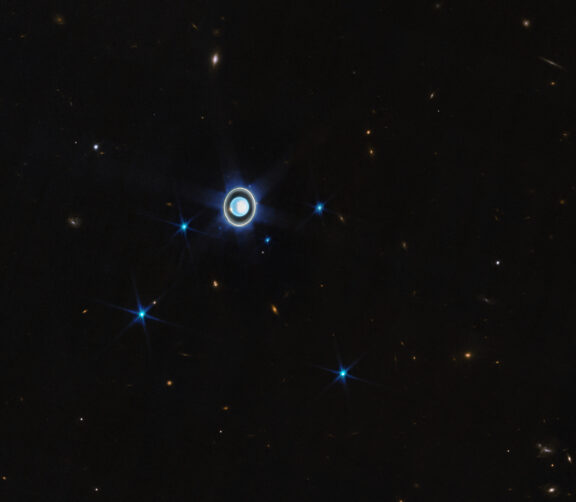Why aren't there more close-up images of Uranus and Neptune?

Written by
Kate Howells
Public Education Specialist, The Planetary Society
November 6, 2023
Photos are one of the best ways for people to discover the beauty and majesty of the worlds of our Solar System. A quick search for images of Jupiter, Mars, or Saturn will yield countless amazing results. But if you search for pictures of Uranus or Neptune, you might be disappointed; there are only a handful of high spatial resolution images of these ice giants.
The primary reason why there are so few close-up images of Uranus and Neptune is that these planets are very far away, making them very difficult and costly to explore. As a result, neither planet has ever had its own dedicated mission.
Each has been explored by only one flyby spacecraft: NASA’s Voyager 2 mission, which flew by Uranus in 1986 and Neptune in 1989. But even this mission was designed primarily to study the Jupiter and Saturn systems; it was only after its primary mission was achieved that Voyager 2 made its flybys of the ice giants. That extended mission yielded the only close-up images that we have of Uranus and Neptune to this day.

Uranus is between 2.6 billion kilometers (1.6 billion miles) and 3.2 billion kilometers (1.98 billion miles) from Earth, depending on where both planets are in their orbits. Neptune is between 4.3 billion kilometers (2.7 billion miles) and 4.7 billion kilometers (2.9 billion miles) from us.
Images from Voyager 2
Voyager 2’s flybys of Uranus and Neptune were very brief. By the time the spacecraft had reached Uranus, it was traveling at 16.6 kilometers per second (about 37,000 miles per hour). It gained even more speed from that flyby, reaching a staggering 27 kilometers per second (about 60,000 miles per hour) by the time it flew by Neptune. For both flybys, Voyager 2’s closest approach lasted only a matter of hours.
Although the spacecraft was able to learn a lot about these planets and their moons during these brief visits, it didn’t get the chance to snap a lot of photos. Voyager 2’s encounters with Jupiter and Saturn were similarly brief, but we have countless more images of those planets because they both have had spacecraft spend years in orbit around them in the years since the Voyager program.
The Hubble Space Telescope has snapped a few photos of these distant worlds, and JWST has already delivered some remarkable images of them both. Planetary astronomers capture images of the ice giants regularly using ground-based telescopes like the Keck Observatory as well. But none of these generate the kind of close-up, high spatial resolution images that could be achieved by a flyby mission.

The future of ice giant exploration
The good news is that in 2022, the National Academy of Sciences’ latest planetary science decadal survey said that a Uranus orbiter and probe should be the top priority for NASA’s next large-scale mission, known as a flagship. Such a mission would involve sending a dedicated spacecraft to enter into orbit around the planet to study it over the course of several years, perhaps also sending a probe to enter Uranus’ atmosphere.
This official recommendation is a big development for scientists who study ice giants. Getting a mission to Uranus or Neptune has been a challenge, not only because of the cost associated with sending a spacecraft to such a distant destination; it is also in part because of NASA’s focus on the search for life, which centers around Mars and, more recently, icy moons like Europa. Despite the decadal survey’s recommendation, it’s not clear yet whether NASA will follow through, as it’s already struggling to fund ongoing programs like Mars Sample Return. With many competing priorities and the challenges posed by inflation, it’s possible that we’ll have to just keep waiting to get new close-ups of outer planets like Uranus and Neptune.

Breakthrough research starts with YOU!
Your support will empower the next round of STEP grant winners. Make your gift today to fund tomorrow's promising science and technology projects.
Donate

 Explore Worlds
Explore Worlds Find Life
Find Life Defend Earth
Defend Earth

